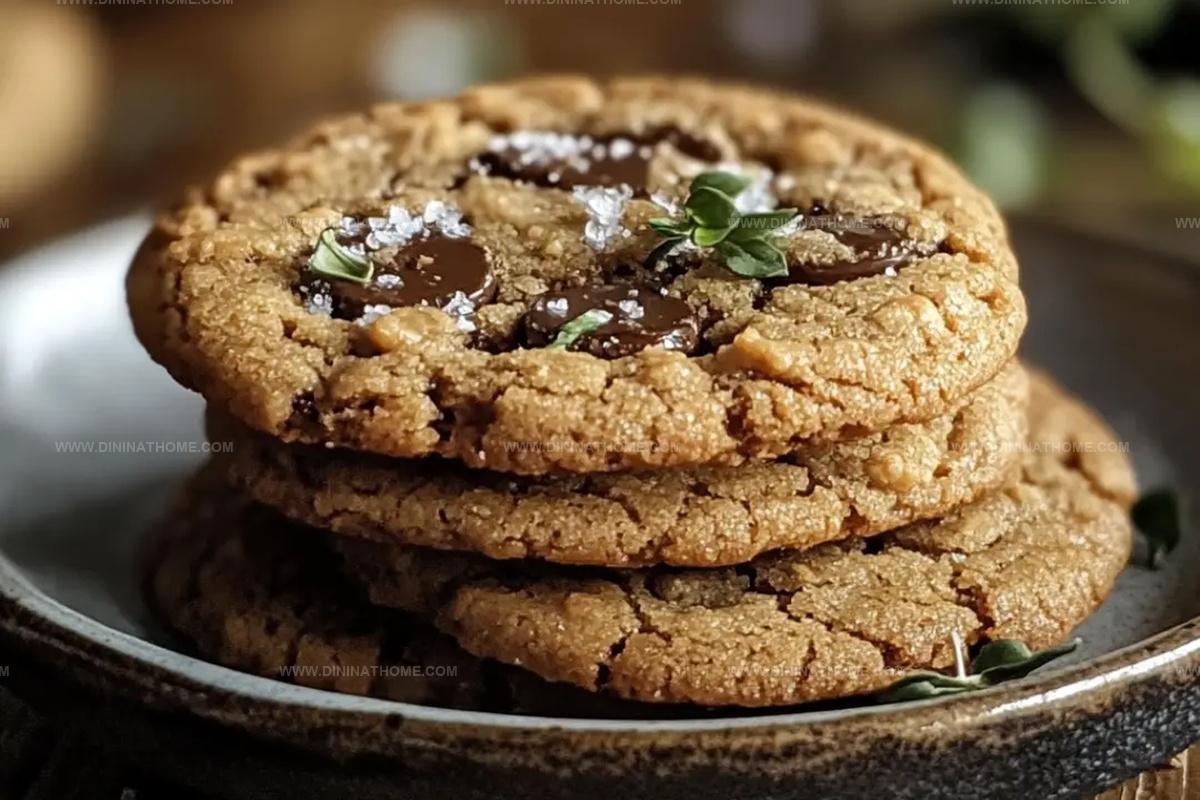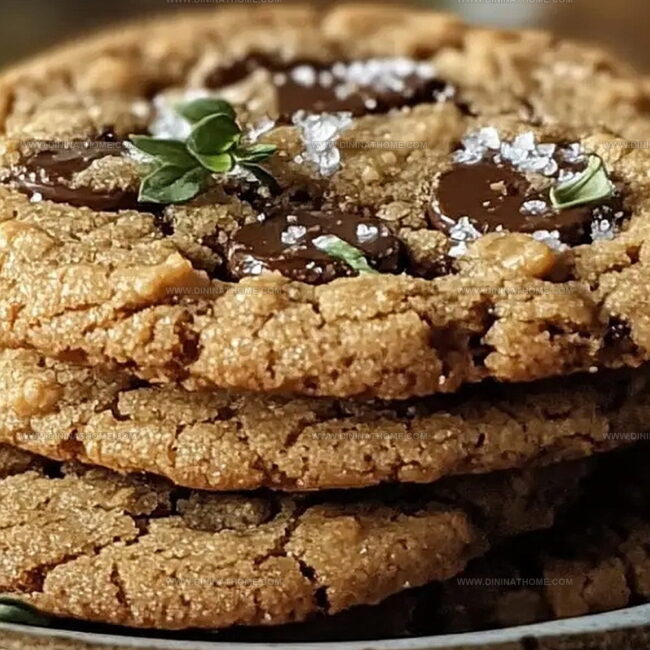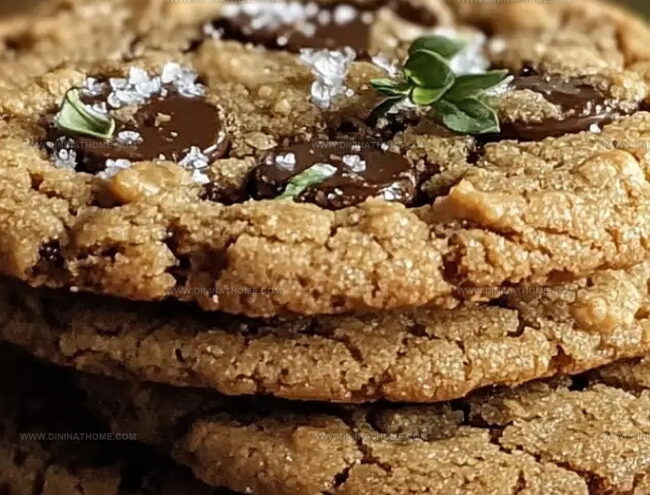Irresistible Espresso Brown Butter Toffee Cookies Recipe
My quest for the perfect espresso brown butter toffee cookies led me through countless kitchen experiments and delightful flavor discoveries.
Butter slowly caramelizing in a saucepan creates a rich, nutty foundation for these irresistible treats.
Crisp edges give way to a tender center that whispers hints of deep coffee complexity.
Toffee bits scattered throughout promise pockets of sweet, crunchy surprise in each bite.
Unexpected combinations of robust espresso and golden brown butter make these cookies a sophisticated indulgence.
Chocolate lovers will appreciate the way these ingredients dance together, creating a harmony of intense flavors.
Let you dive into this delectable adventure that promises to redefine your cookie expectations.
Espresso Cookies with a Brown Butter Crunch
What’s in Espresso Brown Butter Toffee Cookies
Butter and Fat Base:Sweeteners:Binding and Flavor Agents:Dry Ingredients:Add-Ins:Espresso Cookie Steps with Brown Butter Toffee Crunch
Step 1: Transform Butter Into Liquid Gold
Grab a saucepan and melt butter over medium heat.
Swirl the pan occasionally and watch the magic happen.
The butter will foam, bubble, and transform into a gorgeous golden-brown color with an irresistible nutty fragrance.
This process takes about 4-5 minutes.
Once it reaches that perfect amber hue, remove from heat and let it cool down for 10 minutes.
Step 2: Create A Sweet and Creamy Base
In a large mixing bowl, combine:Pour the cooled brown butter into the sugars and whisk until smooth.
Add eggs, vanilla extract, and espresso powder.
Mix thoroughly until everything blends beautifully.
Step 3: Prepare the Dry Foundation
In a separate bowl, whisk together:Slowly incorporate the dry ingredients into the wet mixture.
Stir gently until just combined, avoiding overmixing.
Step 4: Add Delightful Crunch and Flavor
Fold in:Cover the dough and let it chill in the refrigerator for at least an hour.
Pro tip: Longer chilling time (up to 24 hours) enhances the flavor complexity.
Step 5: Warm Up the Oven
Preheat your oven to 350°F.
Line baking sheets with parchment paper for easy cleanup.
Step 6: Shape and Bake the Cookies
Scoop dough into small balls, about 1 1/2 tablespoons each.
Place them 2 inches apart on the prepared baking sheets.
Bake for 10-12 minutes until edges turn golden and centers look slightly underbaked.
Step 7: Cool and Savor
Allow cookies to rest on the baking sheet for 5 minutes.
Transfer to a wire rack and let them cool completely.
Enjoy the rich, complex flavors of your homemade espresso brown butter toffee cookies!
Cookie Enhancements for Espresso and Toffee Layers
Store Espresso Brown Butter Toffee Cookies
What to Enjoy with Espresso Toffee Cookies
Toffee Cookies Espresso or Nut Mix-Ups
FAQs
Browning butter adds a deep, nutty flavor that enhances the overall taste of the cookies, creating a more complex and rich profile compared to regular melted butter.
Espresso powder intensifies the chocolate flavor and adds depth without making the cookies taste like coffee, creating a more robust and complex taste.
Chilling the dough helps prevent spreading during baking, allows flavors to meld together, and results in a more concentrated, chewy cookie texture with better flavor development.
While toffee bits add a delicious caramel-like crunch, you can omit them if desired, but they contribute a unique texture and sweet-buttery flavor that complements the brown butter and chocolate chips.
Print
Espresso Brown Butter Toffee Cookies Recipe
- Total Time: 25 minutes
- Yield: 24 1x
Description
Espresso brown butter toffee cookies deliver a luxurious blend of rich coffee and caramel-like sweetness. Crisp edges, tender centers, and complex flavor profiles make these cookies an irresistible treat you’ll savor with each indulgent bite.
Ingredients
Primary Ingredients:
- 2 1/4 cups all-purpose flour
- 1 cup (2 sticks / 226 grams) unsalted butter
- 2 large eggs
Sugars and Flavor Enhancers:
- 1 cup brown sugar, packed
- 1/2 cup granulated sugar
- 1 tablespoon instant espresso powder
- 2 teaspoons vanilla extract
Finishing and Binding Ingredients:
- 1 teaspoon baking soda
- 1/2 teaspoon salt
- 1 cup toffee bits
- 1/2 cup mini chocolate chips (optional)
Instructions
- Transform butter into a rich, golden-brown elixir by gently melting it in a saucepan, swirling periodically until it develops a deep nutty fragrance and amber hue. This process typically takes 4-5 minutes of careful watching.
- Create a luxurious base by whisking together brown and granulated sugars with the cooled brown butter until achieving a smooth, integrated mixture. Incorporate eggs, vanilla extract, and espresso powder, blending until the mixture becomes uniform and glossy.
- Prepare a separate vessel and combine flour, baking soda, and salt through a gentle whisking motion. Gradually integrate these dry ingredients into the wet mixture, stirring minimally to prevent overworking the dough.
- Gently fold toffee bits and mini chocolate chips into the developing dough, ensuring even distribution. Wrap the mixture and allow it to rest and develop flavors in the refrigerator for a minimum of one hour, with up to 24 hours recommended for maximum taste complexity.
- Activate the oven to 350°F, creating a perfect baking environment. Layer baking sheets with parchment paper to prevent sticking and ensure even heat distribution.
- Portion the chilled dough into uniform balls, approximately 1 1/2 tablespoons each. Arrange these spheres with ample spacing on prepared baking sheets. Bake until edges transform to a golden tone and centers maintain a slightly underdone appearance, typically 10-12 minutes.
- Allow cookies to rest briefly on the baking sheet, permitting initial setting, then carefully transfer to a wire rack for complete cooling and final texture development.
Notes
- Browned butter adds a rich, nutty depth that elevates the cookie’s overall flavor profile beyond standard recipes.
- Chilling the dough develops more complex taste and prevents excessive spreading during baking, creating a perfectly structured cookie.
- Espresso powder intensifies chocolate notes without adding significant coffee flavor, making the cookies more sophisticated and nuanced.
- For gluten-free adaptation, swap all-purpose flour with a 1:1 gluten-free baking blend, ensuring the same tender texture and delicious results.
- Prep Time: 15 minutes
- Cook Time: 10 minutes
- Category: Desserts, Snacks
- Method: Baking
- Cuisine: American
Nutrition
- Serving Size: 24
- Calories: 200
- Sugar: 12 g
- Sodium: 100 mg
- Fat: 10 g
- Saturated Fat: 6 g
- Unsaturated Fat: 4 g
- Trans Fat: 0 g
- Carbohydrates: 27 g
- Fiber: 1 g
- Protein: 2 g
- Cholesterol: 30 mg





James Walker
Lead Recipe Developer & Culinary Educator
Expertise
Southern Cuisine & Farm-to-Table Cooking, Recipe Development & Testing, Culinary Education & Instruction
Education
School: Auguste Escoffier School of Culinary Arts
Program: Diploma in Culinary Arts and Operations
Focus: Comprehensive training in classical and modern culinary techniques, kitchen operations, and farm-to-table practices.
James didn’t learn cooking from a TV show, he learned it from busy kitchens, family gatherings, and long afternoons spent testing recipes the hard way.
After training at the Auguste Escoffier School of Culinary Arts, he brought his love for real, down-to-earth food to every dish he makes.
At Dining At Home, James loves building recipes that feel familiar but still have something special, like adding a twist to a classic or making a slow Sunday dinner feel brand new.
When he’s not in the kitchen, you’ll probably find him swapping garden tips at the farmers’ market or teaching his daughter how to flip pancakes without a mess (almost).